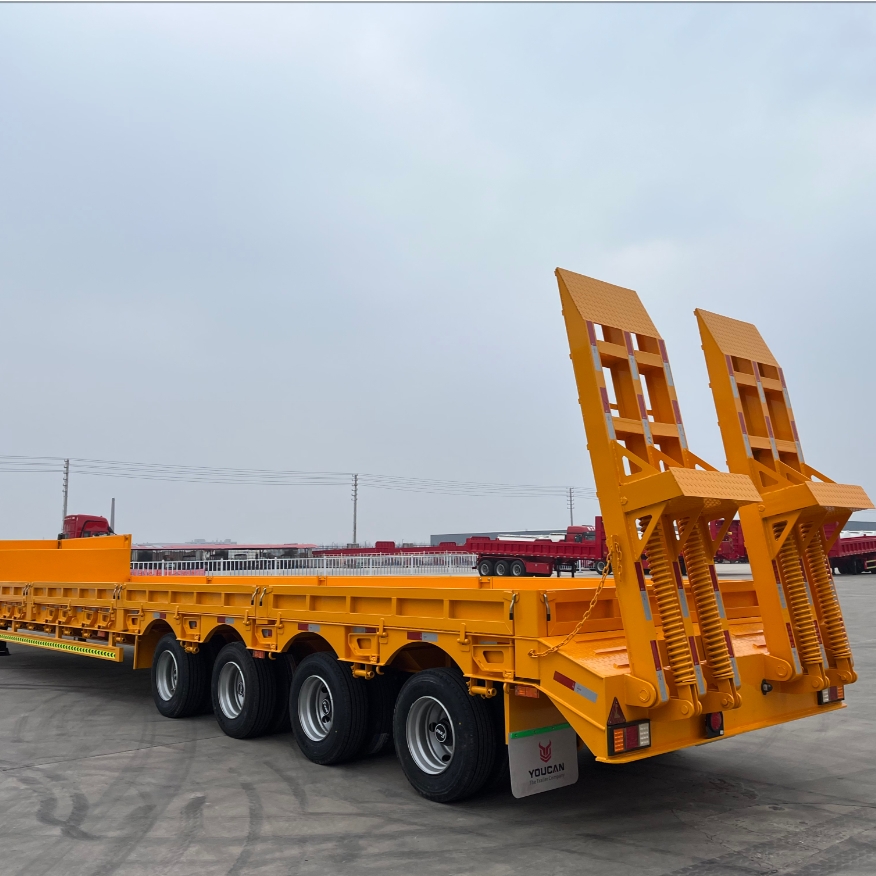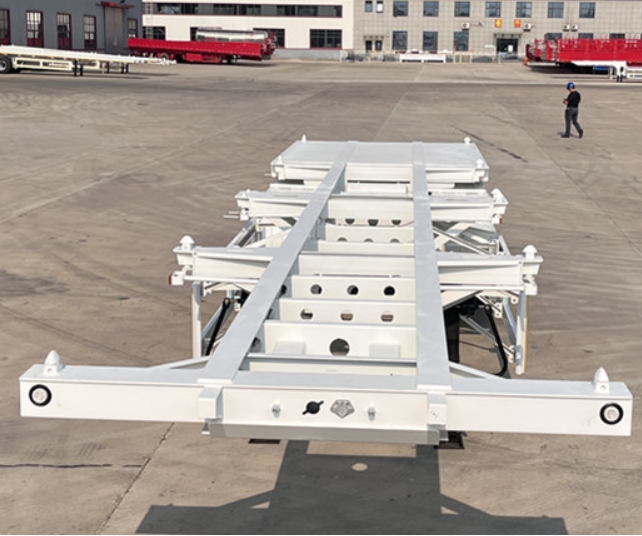How to Load a Container onto a Trailer
Loading a container onto a trailer is a critical step in transporting cargo. It requires careful attention to safety and detail. The process is more than just transferring a container; it's about ensuring everything inside arrives safely at its destination.
This guide covers the important steps to putting a container on a trailer. We'll go over everything from preparing your equipment to ensuring the container is securely attached. Whether you're just getting started or want to improve your skills, this guide will help you load a container safely and accurately.
What is a shipping container?
A shipping container is a standardized, sturdy box used to transport goods around the world. Made primarily of steel, these containers are designed to withstand harsh conditions, including long sea voyages and heavy loading and unloading at ports. Their uniform size and shape make them ideal for efficient stacking and handling, revolutionizing the way goods are transported around the world.
Shipping containers come in a variety of sizes, with the most common being 20-foot and 40-foot lengths. They provide a safe, weatherproof environment for everything from electronics to bulk commodities. The versatility and durability of containers make them indispensable in global trade networks, ensuring products reach their destinations safely and efficiently.
Importance of Properly Loading Containers on Trailers
Properly loading containers onto trailers is essential for safe and efficient transportation. It ensures that the cargo inside remains secure and undamaged during transport while keeping the trailer balanced. This reduces the risk of accidents and ensures the safety of the driver and other motorists. Properly loading containers also maximizes the use of space during transport and allows for more cargo to be transported at one time. Efficient use of shipping space not only reduces shipping costs but also reduces the environmental impact of shipping. In the world of logistics where time and space are money, mastering the art of loading containers is an essential skill for any logistics professional.
How to Load a Container on a Flatbed Trailer
Loading a container onto a flatbed trailer is a task that requires precision and safety. It involves several steps to ensure that the container is transported safely. Here is a step-by-step guide to help you through this process:
Position the Trailer
Align the trailer with the container in a straight line, making loading more manageable.
Park the trailer on level, sturdy ground to avoid any tipping.
Allow sufficient space around the trailer for easy maneuvering of forklifts or cranes.
Be aware of overhead obstructions, such as cables or tree limbs, that could hinder the loading process.
Secure the Trailer
Firmly engage the trailer's brakes to prevent any movement.
Use wheel chocks under the tires to provide extra stability.
Examine the trailer bed for potential damage or debris that could cause complications.
Employ a crane or forklift to fix the shipping container in position.
Confirm that the trailer's locking pins are set and ready to fasten the container securely.
Perform a Safety Check
Verify that the container's weight is within the acceptable range of the trailer's carrying capacity.
Thoroughly inspect the container for any possible structural issues.
Assess the condition of the forklift, crane, or other loading equipment being used.
Ensure all staff are safely clear of the loading zone before commencing the process.
Adhering to these guidelines will help guarantee that your shipping container is securely and efficiently loaded onto the flatbed trailer.
Why Perform Safety Checks?
Safety Checks: The Importance of Conducting Safety Checks Safety checks play a crucial role when loading shipping containers onto trailers, as they secure the cargo, personnel, and other traffic participants. Here are 7 aspects to consider before loading your next shipment:
Container Assessment: Inspect the container for any structural damages, corrosion, or compromised seals that might impact its integrity.
Trailer Evaluation: Examine the trailer's condition, such as brakes, lights, and locking mechanisms, to ensure their proper functionality.
Loading Equipment Inspection: Verify that cranes, forklifts, and other loading equipment are in optimal working condition and appropriate for the container's weight and dimensions.
Securing Device Examination: Check chains, straps, and other securing devices for any wear or damage, and ensure they are suitable for properly securing the container.
Alignment and Positioning Verification: Ensure the container's alignment on the trailer is centered and balanced for safe transportation.
Documentation and Label Accuracy: Go through all necessary transportation and cargo documents, and make sure that labels and placards are accurately displayed and readable.
Weather and Environmental Conditions Assessment: Evaluate the weather and environmental conditions, as they can influence the safety of the loading procedure.
General Tips for Loading a Shipping Container
Essential Guidelines for Efficient Shipping Container Loading Optimizing the loading process for a shipping container necessitates careful planning and skillful execution to make the most of the available space and guarantee the safety of the cargo. Equal weight distribution, proper item securing, and taking into account the nature of the goods being transported are vital. Here are some essential guidelines to enhance the loading efficiency for your next shipment:
Balanced Weight Allocation: Distribute the weight evenly throughout the container to avoid shifting during transportation, focusing on a uniform spread over the container floor.
Employ Blocking and Bracing: Use blocking and bracing techniques to immobilize the cargo, reducing movement and potential damage.
Smart Stacking Approaches: Stack items thoughtfully, positioning heavier boxes at the bottom and lighter ones on top, while refraining from stacking fragile items beneath heavy goods.
Optimal Space Utilization: Fill any gaps with dunnage or smaller items to maximize the use of space, ensuring no unused areas and additional stability for the cargo.
Effective Load Securing Equipment: Use straps, nets, and bars for safely securing items, particularly crucial for mixed or irregularly-shaped cargo.
Customizing Loading Patterns Based on Cargo Type: Adjust the loading method depending on the type of goods, such as perishables, liquids, or delicate items, in order to maintain their condition.
Efficient Unloading Accessibility: Organize items with the unloading process in mind, guaranteeing easy access to vital goods or those required first upon arrival.
Proper Labeling and Documentation: Label all items clearly and verify that the loading documentation corresponds with the actual cargo for a seamless customs and unloading procedure.
Flatbed trailer supplier
Discover More with Youcan Trailer Whether you're transporting goods locally or nationwide, Youcan Trailer is your trusted ally for all shipping and logistics requirements. Explore our extensive online inventory or visit one of our branches to speak with one of our knowledgeable specialists. If you're keen on delving deeper into the captivating world of shipping and logistics, check out our blog for comprehensive guides, up-to-date trends, and the newest innovations in shipping equipment.

 WhatsApp
WhatsApp
 sales@youcantrailer.com
sales@youcantrailer.com
 +8615203709888
+8615203709888


